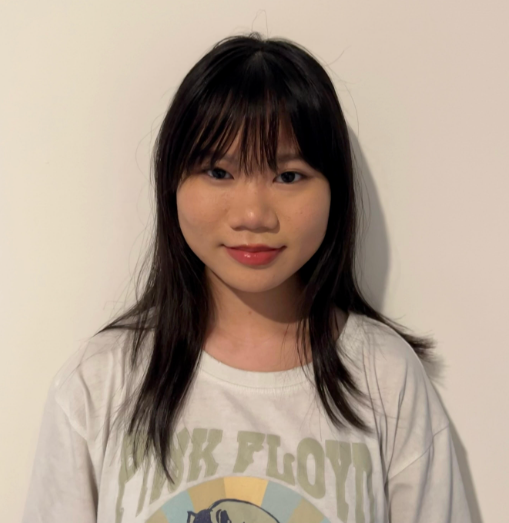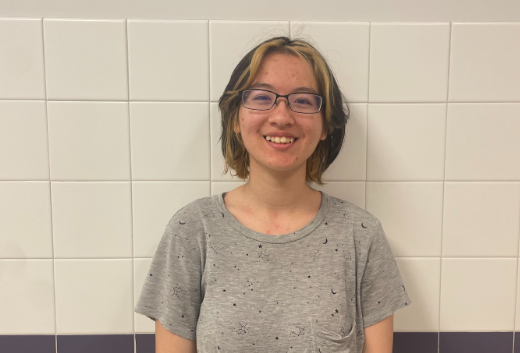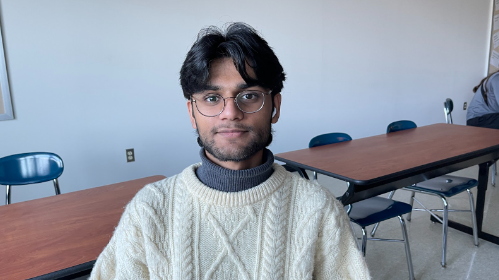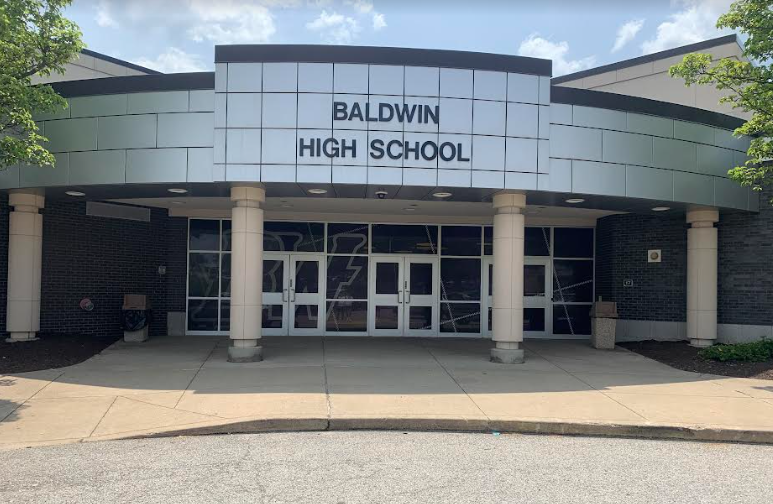Baldwin High School serves the Baldwin, Whitehall, and Baldwin Township communities.
Celebrating Asian cultures: Students share their stories
May 24, 2023
In 1920, the population of Asian Americans in America was about 182,000. Now, more than 100 years later, that number has risen to 24 million.
Asian Pacific American Heritage Month was established by President George H. W. Bush in 1992 for the month of May. The purpose of this was to honor the achievements of Asian Americans, Pacific Islander Americans, and Native Hawaiians.
Throughout the hallways and classrooms of Baldwin High School, the unique customs, traditions, and talents of students representing a wide range of Asian backgrounds are prevalent, creating a tapestry of cultural heritage. In this story, Asian students explain the diversity of their cultures and the struggles they have encountered.
Htoo enjoys event celebrating Karen people, culture
Sophomore Eh Lar Dah Htoo immigrated to America from Thailand along with her parents and four siblings and has been living in Pittsburgh since 2009.
Htoo is part of an ethnic group called Karen (pronounced kuh-ren) that has resided in Burma. Many have migrated to other countries, including America, due to war and ethnic cleansing.
Htoo always has looked forward to traveling to Ohio for a celebration of Karen Martyr’s Day, an annual event that honors her country’s heroes.
“This event is my favorite because it brings me the closest to my culture,” Htoo said.
It is a day filled with noodles, Burmese tea leaf salad, and boba, and she has felt a deep sense of belonging and connection to her heritage there. The event also featured soccer and volleyball games, which Htoo loved to watch.
“The last time I was at this event was in the summer of my middle school years. The main thing I remember was being with my family, eating rice on woven colored mats,” Htoo said.
The event was canceled during the pandemic. It came back last year, but Htoo could not attend, though she does plan on attending this year.
Htoo wished more people knew how beautiful Karen culture is and how hardworking the villagers are.
“Our cultural clothes are woven and consist of different patterns and colors depending on the consumer’s preference. There is also a popular bamboo dance that is performed at important events, which can be difficult to learn because of its complexity,” Htoo said.
Growing up surrounded by people of the same ethnicity at her church, Youth With a Mission Pittsburgh, taught Htoo important values, such as respecting elders, taking care of the house, and maintaining relationships. She learned to bend over a little when walking past elders and to prioritize doing chores.
However, Htoo also has experienced the misuse of the name “Karen.” For example, she would see Karen people sharing their culture on TikTok, but in the comments, people would make fun of it by comparing it to the online nickname for an entitled White woman, “Karen.” Htoo felt hurt that others used the derogatory online name to disrespect her heritage.
Despite this, Htoo is proud to speak the Sino-Tibetan language, Karen. While she wasn’t fluent in English at first, she quickly picked it up due to being surrounded by it at school and taking classes like ESL.
After a struggle, she embraces Nepali identity

Karuna found that living in America made it hard for her to embrace her culture.
Sophomore Karuna Neupaney immigrated from Nepal in 2008 and struggled to accept her cultural identity.
“When I was younger and on FaceTime with my friends, I would mute when I was talking to my parents because I was ashamed of speaking a different language. But now I don’t do that anymore,” Neupaney said.
She regrets this resentment she once felt about her heritage.
“My mom would threaten me and say she would put me in a Nepali school to learn more language and writing. I was always worried she would do it and start sobbing. But I wish she would have made me do it so I could maybe write in Nepali,” Neupaney said.
Living in America, it can be difficult for refugees to stay in tune with their home culture. Neupaney said she stays connected through her family and weddings.
“Last summer I went to a wedding. It was one of the best days of my life … because of the music and all of the people and my outfit,” Neupaney said.
Neupaney explains how after she started to embrace her culture, she became closer to her family through South Asian traditions. Nepali culture is diverse and has been influenced by neighboring countries, like India, which allows Bollywood to be a shared experience.
“I was going to see this new Bollywood movie in theaters and I went with my sisters. It made me so happy that my sisters and I could bond because I wasn’t able to do that in the past,” Neupaney said.
Though she loves her culture now, she still struggles with her identity issues.
“I think it’s hard for other people to see you as more than just an immigrant. You could do so much more, but people will only see you as `the brown girl,’ ” Neupaney said.
She gives simple advice for anyone struggling with their cultural identity: There’s no expiration date to start loving who you are, so why not start now?
Vietnamese cooking keeps him connected
Despite sophomore Leon Vo’s upbringing in the United States, his passion for Vietnamese cooking keeps him connected to his culture.
“Food is one of my favorite things, and it is the most prevalent part of Vietnamese culture in my life,” Vo said. “It keeps me connected to my family.”
Vo recalls making foods like banh mi, a Vietnamese sandwich, and pho, a noodle soup dish, with his relatives when he was little, creating a strong bond with his family.
Vo also loves the holidays his family celebrates, like the Lunar New Year, one of the most prominent Vietnamese holidays. This day consists of good food, gifts, and family time. Usually, there are big family parties where they come together and celebrate the arrival of spring on the Vietnamese calendar.
“I love that we emphasize family,” Vo said. “I think it is one of the most important things we have, and we should appreciate them.”
He wishes people knew more about his culture.
“I wish people knew more about our cultural practices, especially with religion. I think it teaches a lot of core values,” Vo said.
Vietnamese culture mainly practices Buddhism, which is also ingrained into the culture. Buddhism especially values patience and generosity.
Outside of school, Vo partakes in the Korean martial art Tang Soo Do. He believes the practice instills discipline and helps kids stay active.
“I’m big on sports and athletics, so when my parents offered lessons, I jumped at the chance to exercise and learn more about Asian culture,” Vo said.
He makes sure to prioritize his academics over anything else.
“Like many other families, my parents came here in the 1990s for the chance to thrive,” Vo said. “I don’t want their hard work to go to waste, so I’m trying to do what I can for their efforts to be worthwhile.”
Racism during pandemic strengthened Chen’s cultural ties

Athena Chen celebrates her Chinese heritage by spending time with her family.
Being a student of Chinese descent during the pandemic was challenging, but sophomore Athena Chen used this experience to reconnect with her family’s culture.
During the pandemic, there was a rise in hate crimes against East Asians, especially those of Chinese descent, with some people blaming them for the virus that overtook the world.
“People didn’t even have to know I was Chinese to make racist jokes regarding the pandemic,” Chen said. “My being Asian was enough for them.”
Hearing those remarks was difficult, she said.
“I can’t say that I handled those situations well, as they caused severe and still-present anxiety,” Chen said. “I found that talking about my experiences really helped in relieving that anxiety and making me feel not alone.
She also decided to really embrace her cultural identity.
“During the pandemic, I saw through the thick and thin of being Chinese, which enabled me to establish it as a core part of my identity,” Chen said.
She especially loves cooking traditional Chinese foods with her family.
“My family and I typically like to cook foods such as dumplings/wontons; zongzi, which is a leaf-wrapped, glutinous rice dish; and tang yuan, a dish with glutinous rice balls in a sweet or savory soup.
Holidays also are important.
“I celebrate various events, such as Chinese New Year and the Mid-Autumn Festival,” she said. “For the Mid-Autumn Festival, we do prayers and offerings, as well as dining on treats such as moon cakes.”
Like many other families, Chen’s parents left their home country in search of greater things.
“My parents immigrated to America separately around 2002 to seek better opportunities in the U.S.,” Chen said.
She said she would like to visit China some day.
“I hope to visit my parents’ hometowns and experience what it’s like to walk down the streets of China,” Chen said. “I heard their street food is amazing.”
She’s glad that she is closer with her culture now.
“I wish people knew that Chinese culture is much more than the Westernized view that most people have today,” Chen said. “Our language and people are so beautiful and deserve to be appreciated, not mocked.”
Ochs embraces culture while still feeling `left in the middle’

Stephanie Ochs finds it unique being mixed racially, but has a hard time connecting with her culture.
Senior Stephanie Ochs is half-Chinese and half-White, a combination that sometimes has her feeling “left somewhere in the middle.”
“I look Asian and my mom speaks Chinese and we eat and make Chinese food,” Ochs said. “But at the same time I am not surrounded by the language or culture. I exist in a weird gray area and it’s very unique being mixed racially.”
That “gray area” sometimes shows up during routine experiences.
“When I go to the Chinese grocery store, I always have to say that I only speak English because I look Chinese and they assume,” Ochs said.
Her mother moved to San Diego from China when she was 18, as she was pressured by her parents to leave Taiwan, as they felt she would have a better life in the United States.
Ochs has a hard time connecting with her culture at times. She explains that she wants to learn the Chinese language Mandarin in the future, but she doesn’t now because of her mother’s experience with her older sister.
“After my older sister only spoke Chinese, my mother learned that it would be really hard socially to balance it because no one would understand her,” Ochs said. “So my mom decided to not teach me any of it.”
Still, she celebrates and appreciates her culture.
“The food is fantastic,” Och said. “Chinese culture has a lot of legends and myths and historical accounts and it’s so interesting if you dig into it. There’s just so much.”
Ochs also tries her best to incorporate Chinese culture into her life.
“There are definitely parts of my life that are Chinese. We shop at the Chinese market and celebrate the Lunar Year,” Ochs said.
Though she loves her culture, she has experienced hate for it, as she would get called derogatory names in elementary school and called “illegal” on the bus while growing up, Ochs said.
She also said she has experienced harmful stereotypes about being Chinese.
“I think the thing that gets me is the stereotype of Chinese people being the ‘model minority’ ” she said, referring to the stereotype that Asians are all high achieving.
“It is these racist ideas that can get into people’s heads where they think it’s okay to say because it isn’t a `harmful’ stereotype to say,” Ochs said. “But it can really devalue people’s hard work and be harmful to someone if they don’t fit the expectations.”
Patel combines American, Indian cultures

Aditya Patel is proud of his Gujarati culture, but fears his native language is being lost in America.
Sophomore Aditya Patel is a second-generation immigrant from Gujrat, India, who grew up celebrating that most American of family traditions: the Fourth of July parade.
His grandparents from both sides immigrated to America in the ’80s, and Patel’s grandfather owned a mini-mart in Brentwood, which was the center of their family’s social activities.
“Every 4 July, we would bring chairs and sit outside to watch the parade. Since everyone in Brentwood knew us, it was easier to socialize and so we adopted that part of American culture,” Patel said.
His parents, who are adventurers, would bring him and his young siblings to American national parks.
“I went to Yosemite National Park whenever I was younger, around 10 or 11,” he said. “Whenever I was 12, we went again from New York all the way to San Francisco.”
Despite being so immersed in American culture, Patel’s parents encouraged his love for Indian cooking and his desire to stay connected to his Indian heritage.
“If my mom is in the kitchen, I’m usually there with her because I don’t want to lose that part of my culture,” Patel said. “I want to learn how to cook, and I’m going to learn how to make the dishes that only my mom, my aunt, or my grandma know how to make.”
Patel grew up with traditional clothing and sometimes performed arati (prayer) in the morning. They also went to Garba, a traditional Indian dance event, during the festival of Navaratri.
While Patel has always been proud of his culture, sometimes he faces rude comments from others. For example, at a Denny’s restaurant in South Carolina, an elderly White woman told his mother “you do not belong here” – to which his mother replied, “Yes, I do.”
Patel points out that his native language is being lost in America.
“A big part of it is a lot of Gujarati kids, especially our age, they’re losing the language,” he said. “They lost it with my little brother. … My little sister is not going to speak it. But as long as I’m around, I’m going to speak it. I’m going to remember it.”



